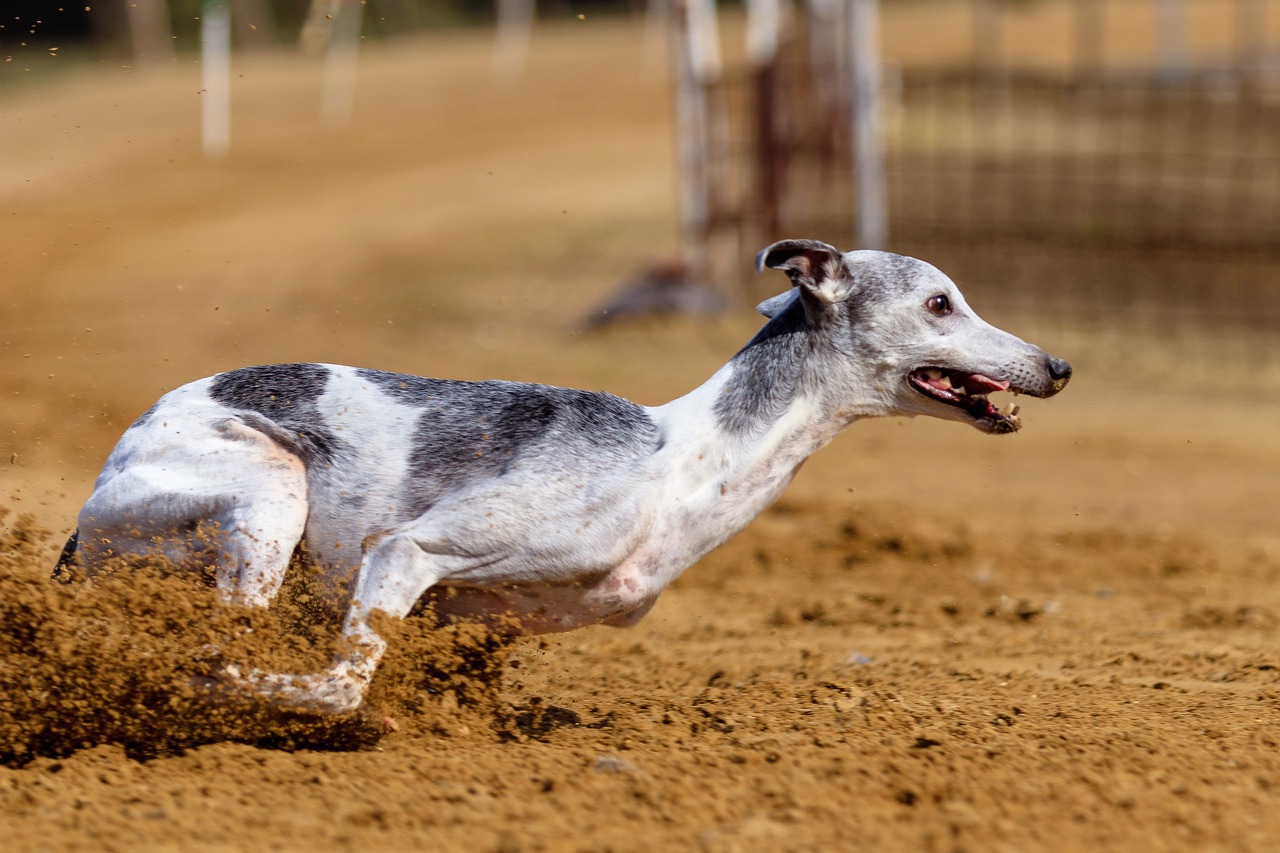Greyhounds, renowned for their elegant, streamlined forms and incredible speed, are a breed steeped in history, having been featured in ancient Egyptian art and mentioned in Greek and Roman literature. Originally bred as hunting dogs capable of chasing fleet-footed prey like deer and hare, they are perhaps best known today for their roles in dog racing and as a popular choice for adoption post-racing retirement. Greyhounds have a unique blend of gentle grace and athletic prowess, which endears them to their owners. Despite their calm demeanor, they possess several unusual habits that are both fascinating and reflective of their evolutionary and racing backgrounds. These habits often surprise new owners and can offer insight into the breed’s specific needs and care requirements. This article explores seven of the most unusual habits of Greyhounds, delving into why these behaviors occur and how they can be effectively managed.

1. “Roaching”
One of the most endearing and unusual habits observed in Greyhounds is “roaching,” where they lie on their backs with their legs in the air, resembling a dead cockroach. This behavior is often a sign of complete relaxation and comfort. Greyhounds, with their minimal body fat and unique physiology, find this position helps to regulate their body temperature and provides relief to their long spines. While this habit is harmless, providing a comfortable, padded area for your Greyhound to lounge in can help prevent any discomfort from lying on hard surfaces.
2. Sleep Startling
Greyhounds are known for “sleep-startling,” where they may suddenly jerk or kick out during sleep, sometimes even jumping up as if alarmed. This behavior can be attributed to their predisposition to chase in their dreams, likely a carryover from their hunting and racing days. While generally normal, it’s important for owners to be aware of this when approaching a sleeping Greyhound to avoid startling them, which could lead to defensive reactions.
3. High-Speed Zoomies
The “zoomies” in Greyhounds can be an astonishing sight, with their bursts of high-speed running in circles or back and forth, usually after periods of rest or excitement. These sudden eruptions of energy showcase their athletic nature and need for regular exercise. Owners should provide safe, enclosed spaces for Greyhounds to express this behavior freely and safely, ensuring that they don’t overexert themselves or risk injury.
4. Extreme Shyness or Timidity
Greyhounds can sometimes exhibit a surprising degree of shyness or timidity, especially in new environments or around strangers. This trait may stem from the limited socialization they receive in racing kennels. It’s crucial for owners to introduce new experiences slowly and gently to help their Greyhounds become more confident. Regular, positive social interactions can help ease their anxiety and build trust.
5. Chattering Teeth
Greyhounds often chatter their teeth, a behavior that can occur when they are excited, nervous, or even when they are cold. While this might seem concerning, it’s typically a benign habit indicative of their heightened emotional state. Ensuring that your Greyhound is warm, calm, and comfortable can help minimize this behavior. If teeth chattering is frequent and accompanied by signs of distress, a veterinary check-up can help rule out any underlying issues.
6. Selective Hearing
Despite their intelligence, Greyhounds can sometimes display what appears to be selective hearing. They may not respond to commands immediately, especially if distracted. This can be partly attributed to the breed’s independent nature and their training to chase without distraction. Consistent, patient training and engaging their attention with positive reinforcements can improve their responsiveness over time.
7. Low Stamina for Prolonged Activity
Interestingly, despite their reputation for speed, Greyhounds have relatively low stamina for prolonged activity and are quite content with being couch potatoes after a short burst of exercise. They can tire easily from long-duration activities due to their physiological build favoring speed over endurance. Regular, moderate exercise tailored to their capabilities is essential to keep them healthy without overtaxing their energy reserves.
Greyhounds are a unique breed, full of quirks that reflect their specialized breeding and racing heritage. Understanding and accommodating their unusual habits can greatly enhance the bond between Greyhounds and their owners. By providing appropriate care, exercise, and socialization, owners can ensure that their Greyhounds lead a happy, healthy, and well-adjusted life, thriving in their post-racing years as beloved pets.
 Toledo, United States.
Toledo, United States.